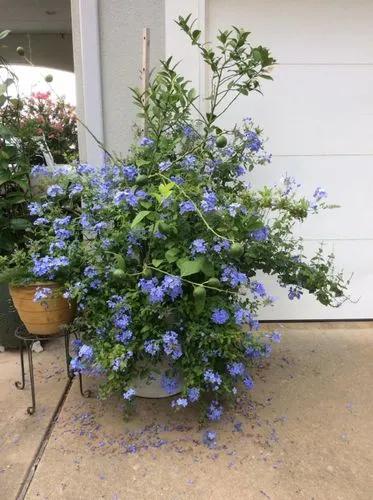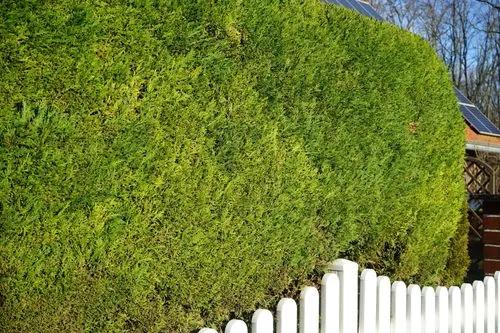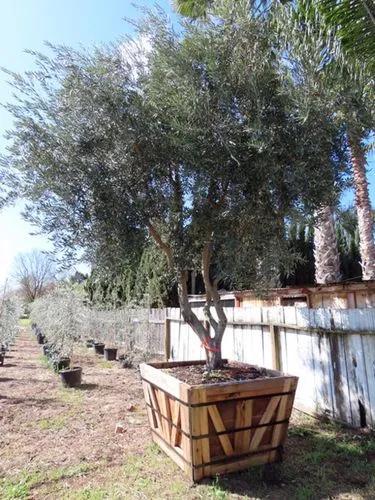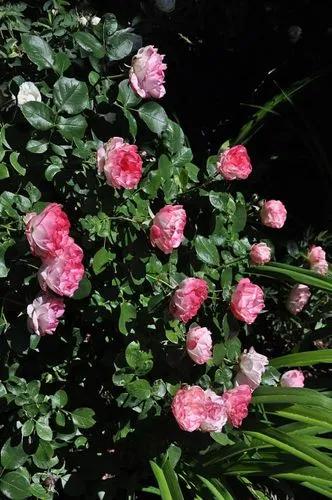Curio talinoides is a conspicuous, spreading, succulent shrub with striking, bluish grey-green, elongated, rounded, succulent leaves. Known from the Eastern Cape of South Africa, growing mainly on cliffs and confined to deep rocky gorges.
Narrow-leaf Chalk Sticks Care
Curio talinoides



Curio talinoides is an ascending, much-branched, evergreen, shrubby succulent, about 500 to 700 mm tall and to about 800 mm in diameter, rooting where the branches touch the ground. Roots are fibrous. Branches are brittle, rounded, succulent, woody below, easily broken and with a resinous scent. Main branch about 20 mm in diameter, glaucous, blue-green. Leaves and stems pruinose, thickly covered with a powdery white bloom, resulting in their attractive bluish to bluish grey-green colour. The leaves are densely and alternately arranged, crowded on the stems, set about 3-5 mm apart, linear, ascending, sickle shaped, tapering at both ends, about 45-95 mm long, rounded to slightly flattened laterally, 4-6 mm thick, and obscurely striated lengthwise, ending in a stiff sharp point.
How to Care for the Plant

Water

My narrow-leaf chalksticks gets lots of sun in the morning & early afternoon. hardiness: the lowest it will go is 25 degrees f. watering: narrow-leaf chalksticks are drought tolerant & therefore have low water needs. mine in the garden gets drip irrigated every 8-14 days depending on the temps.

Pruning

Houseplants should typically be pruned at the beginning of the growing season, which is late winter or early spring for many varieties.

Fertilizer

Simply apply the fertilizer around the base of the plant, extending to the drip line. For vegetables, place the fertilizer in a strip parallel to the planting row. Water-soluble fertilizers are faster acting but must be applied more frequently. This method gives plants food while you water.

Sunlight

All plants require light for photosynthesis, the process within a plant that converts light, oxygen and water into carbohydrates (energy). Plants require this energy in order to grow, bloom and produce seed. Without adequate light, carbohydrates cannot be manufactured, the energy reserves are depleted and plants die. They need 12-14 hours of indirect sunlight.

Soil

Loose, light, humus soil is ideal for this plant.

Temperature

It is cultivated in open air in the tropical and warm Mediterranean climate, with temperatures which it is good to keep over the 5°C, best 10-12°C, but can withstand light frost for short periods if very dry (hardy down to -2 to -10ºC, even if with damage to the foliage).

Container

Increase pot size by 2.5-5 cm (1 to 2 inches) in diameter for plants that are growing in pots 25.4 cm (10 inches) in diameter or less. For larger plants, those growing in pots greater than 10 inches in diameter, increase the pot size by 5 or 7.62 cm (2 or 3 inches) in diameter.

Popularity

4,329 people already have this plant 563 people have added this plant to their wishlists
Discover more plants with the list below
Popular articles






